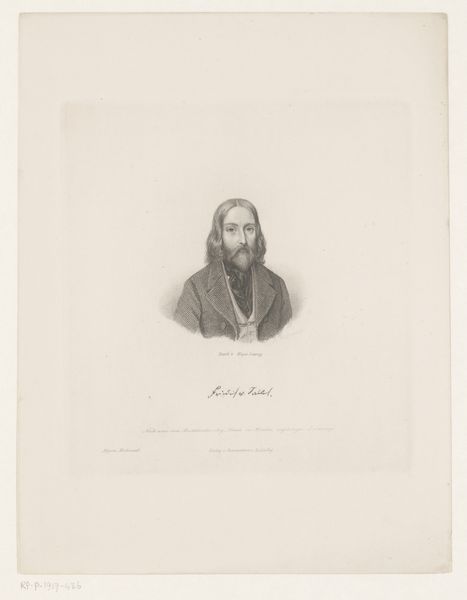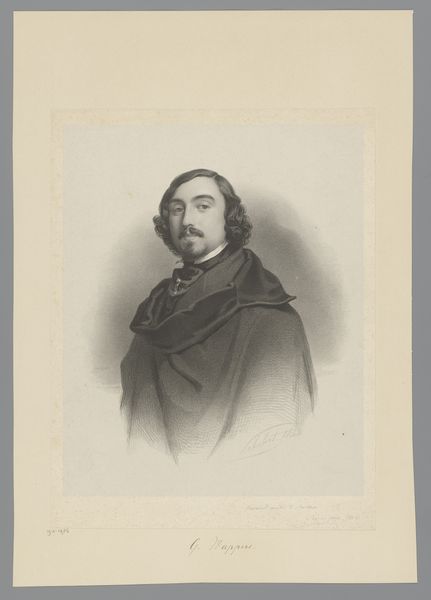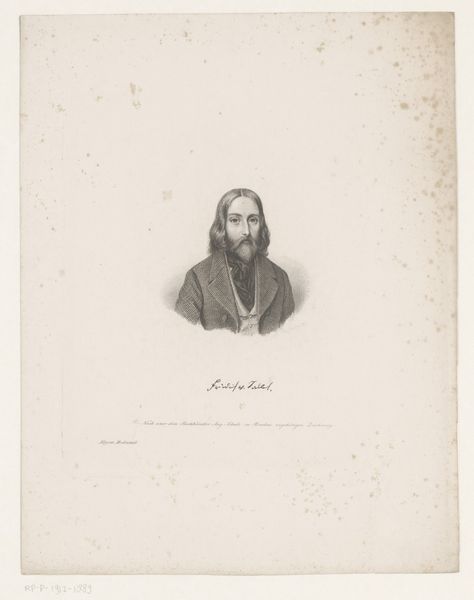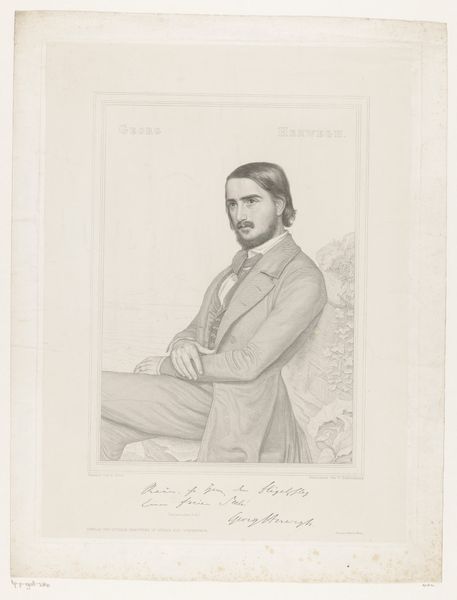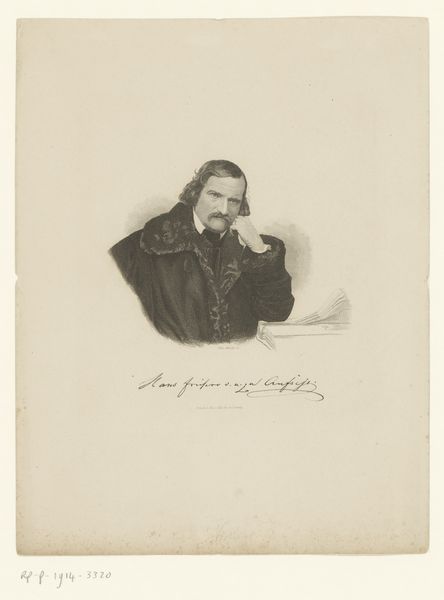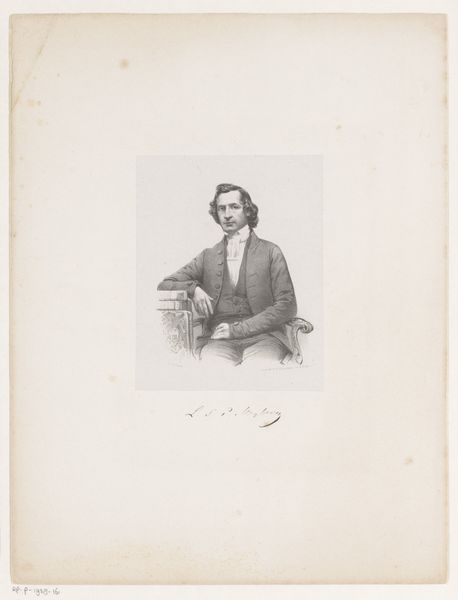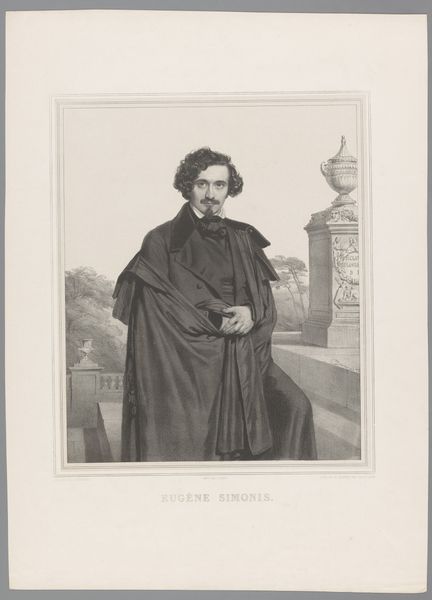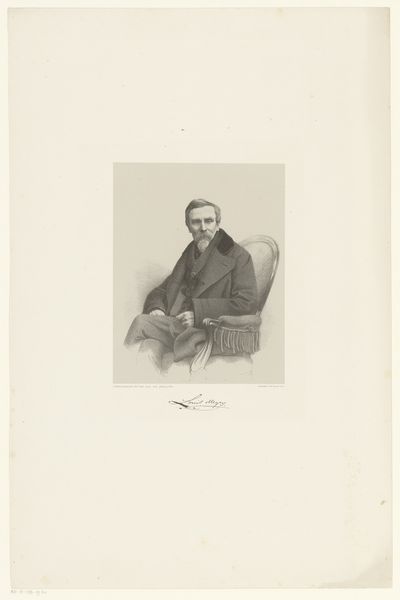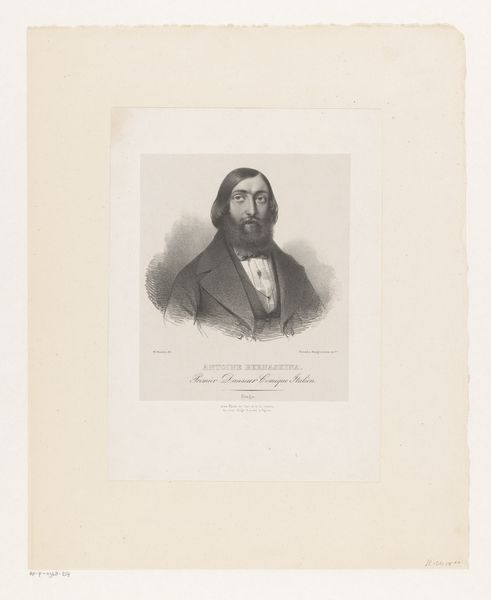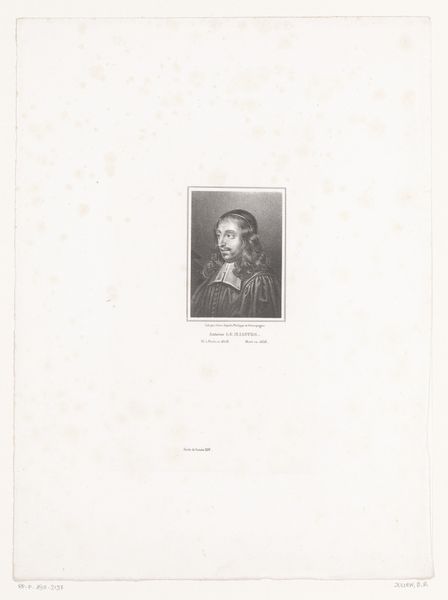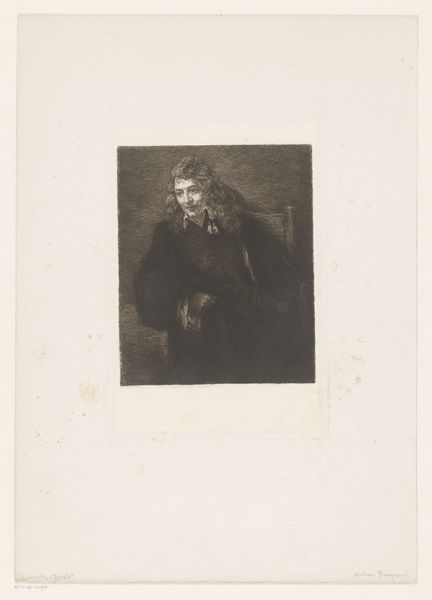
drawing, etching, pencil
#
portrait
#
pencil drawn
#
drawing
#
etching
#
pencil sketch
#
pencil drawing
#
romanticism
#
pencil
#
academic-art
#
realism
Dimensions: height 545 mm, width 406 mm
Copyright: Rijks Museum: Open Domain
Curator: We are looking at Charles Baugniet's 1836 portrait of Louis Gallait, rendered meticulously in pencil. It’s currently held here at the Rijksmuseum. Editor: The first thing that strikes me is the subdued intensity. There’s a formality, a kind of… poised melancholy in his gaze. Curator: Yes, and if we consider the historical context, Belgium was newly independent when this was created. Gallait, a prominent painter, embodies a sense of national identity at a pivotal time. Editor: His dark cloak reminds me of scholar's robes, immediately conjuring images of intellectual authority and artistic legacy. The drape almost appears to be an official garment, with Gallait gazing to the viewer in subtle nobility. What might this garb infer about how Gallait or Baugniet viewed themselves and their roles in Belgian society at this moment? Curator: That’s an interesting perspective. Also the accessories—the open book hinting at knowledge, the detailed furniture pointing to affluence. It places him firmly within a certain social strata and alludes to larger power dynamics. Editor: I can see an interplay between classicism and realism at play here. Baugniet used shading in the background, as if the backdrop is emerging or fading away, like in a dream, whereas, Gallait and the objects closer to him are very focused. His body is also very carefully and realistically portrayed to life; what kind of impact might this decision have? Curator: The realism connects back to the broader themes present, the rise of Romanticism perhaps allowing for individuals to insert themselves into their own self-conception. How does this portrait reflect his understanding of himself? How did it perform within his societal moment? Editor: I hadn’t thought of that so literally, but I agree. The objects surrounding Gallait and the fashion he is donning act almost like a time capsule, solidifying certain assumptions in society for decades to come. Curator: Portraits are powerful tools aren’t they, for crafting narratives? It is as if Gallait and Baugniet saw themselves and Belgium from this moment forward. Editor: Indeed. The weight of cultural memory is all around us, it makes one want to ponder even harder on the past's relationship to present values.
Comments
No comments
Be the first to comment and join the conversation on the ultimate creative platform.
